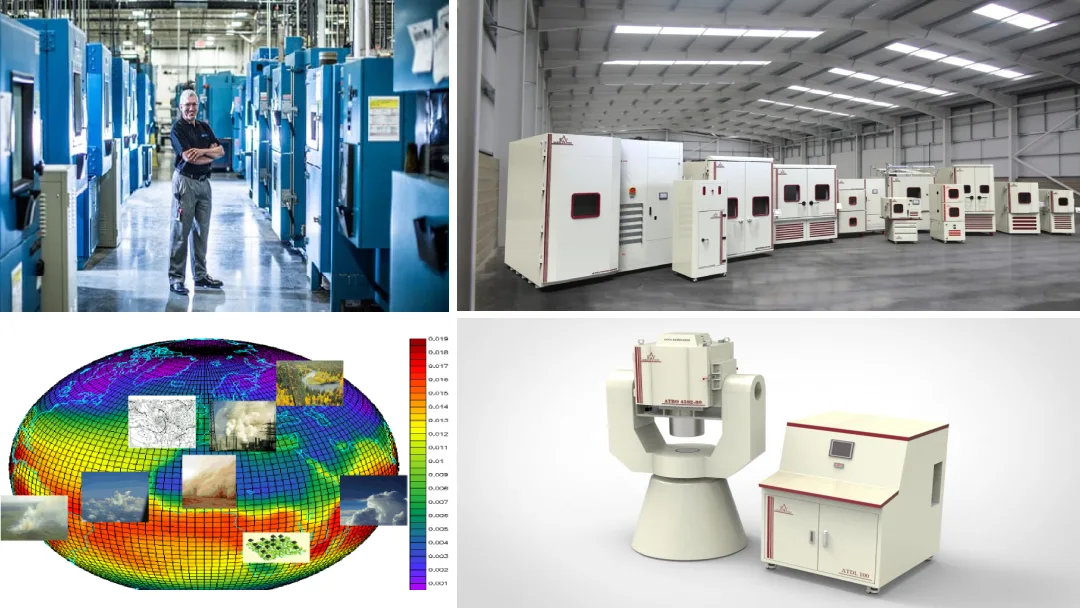
In today’s rapidly evolving world, industries across various sectors are increasingly turning to environmental testing to ensure the reliability, durability, and performance of their products in real-world conditions. Simulating diverse environmental conditions is critical for product development and quality assurance, whether for electronics, automotive components, pharmaceuticals, or textiles. Aryasarmayesh, a leading manufacturer of cutting-edge environmental chambers, provides innovative solutions for testing and simulating a wide range of environmental factors, offering industries the tools they need to optimize performance and ensure compliance with international standards.
Click here for more information about Medium Temperature Test Chambers.
What is Environmental Simulation?
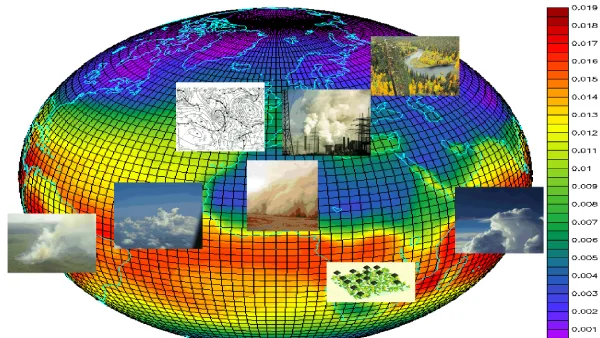
Environmental simulation refers to the process of creating models or virtual representations of real-world environments in order to study, analyze, or predict various phenomena. These simulations are used to understand how different environmental factors interact and influence systems, behaviors, or processes over time. They are employed across numerous fields, including ecology, urban planning, climate science, and engineering, to assist in decision-making, policy development, and scientific research.
Types of Environmental Simulation
Environmental simulation is a powerful tool for understanding and addressing some of the world’s most pressing environmental challenges. From predicting climate change to managing natural resources and preparing for natural disasters, these simulations provide invaluable insights that help guide decision-making and policy. Next, we will introduce the types of environmental simulation tests:
Climate and Weather Simulations:
Climate models simulate the Earth’s atmospheric processes, including temperature, precipitation, wind patterns, and ocean currents. These models help scientists predict future climate conditions and understand the impact of human activities, such as greenhouse gas emissions, on global warming. Weather simulations, on the other hand, focus on short-term forecasting, often using real-time data to predict weather patterns in a given area.
Ecological Simulations:
Ecological simulations model ecosystems, biodiversity, and the interactions between species and their environment. These simulations can predict the effects of various environmental changes, such as deforestation, pollution, or the introduction of invasive species, on an ecosystem’s health and stability. They are often used to support conservation efforts and resource management.
Urban and Environmental Planning:
Urban planning simulations focus on designing sustainable cities. These models incorporate data on traffic flow, population density, resource consumption, and waste management to optimize land use, reduce pollution, and improve the quality of life for urban populations. Environmental simulations can also predict the impacts of urbanization on natural habitats and biodiversity.
Pollution and Environmental Impact Simulations:
Simulations of pollution dispersion in air, water, and soil help assess the environmental impact of industrial activities, waste management practices, and chemical spills. These models are used to predict how pollutants spread, the potential effects on human health and the environment, and to develop strategies for mitigation and remediation.
Natural Disaster Simulations:
Environmental simulations are also used to model natural disasters such as hurricanes, earthquakes, floods, and wildfires. These simulations help authorities plan emergency responses, design infrastructure that can withstand disasters, and understand the long-term effects of such events on human populations and ecosystems.
The centrality of Environmental Simulation Testing
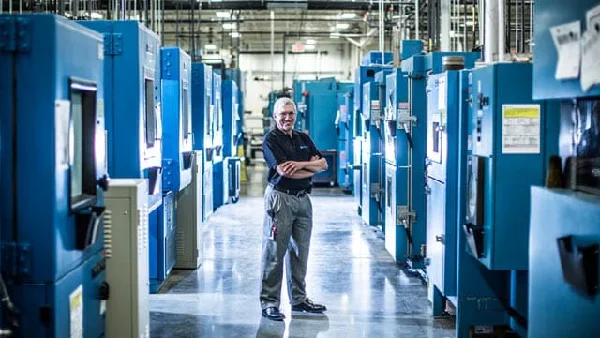
The centrality of Environmental Simulation Testing lies in its capacity to recognize potential shortcomings and vulnerabilities in items sometime recently they have been sent within the field. By subjecting items to controlled environmental factors, producers can pick up important experiences in their execution, strength, and unwavering quality. This proactive approach not as it were makes a difference in minimizing the hazard of item disappointment but moreover upgrades client fulfillment and belief.
Benefits of Environmental Testing
One of the essential benefits of Environmental Simulation Testing is its flexibility. It can be custom-made to mimic particular environmental factors pertinent to the aiming application of the item. Next, we will introduce the Benefits of environmental simulation tests:
- Cost-Effective
- Risk Reduction
- Informed Decision Making
- Public Awareness and Engagement
The process of Environmental Simulation Testing
The method of Environmental Simulation Testing regularly includes a few steps. To begin with, the testing parameters are characterized based on the product’s expected utilization and environmental factors it may experience. The item is subjected to these conditions in a controlled research facility setting. Information is collected and analyzed throughout the testing process to assess the product’s execution and recognize any zones for change. Here’s a breakdown of what happens during an environmental simulation:
1. Setup and Preparation:
- Define Testing Parameters: The first step involves identifying the specific environmental conditions that need to be simulated (e.g., temperature, humidity, pressure, light, wind, or even specific atmospheric gases). These parameters are based on real-world scenarios that the object or system might encounter.
- Select Testing Equipment: Specialized equipment such as environmental chambers (for temperature, humidity, or pressure), vibration tables, or wind tunnels is selected. The equipment must be capable of mimicking the intended environmental conditions.
- Prepare the Test Sample: The product, material, or system being tested is prepared and placed in the testing environment. It might involve ensuring the sample is in the right configuration (e.g., powering up electronic devices, positioning materials correctly, or applying specific load conditions).
2. Simulation of Environmental Conditions:
During the simulation, the following factors are commonly introduced to test the object’s performance:
- Temperature Extremes: The system or material is exposed to both high and low temperatures, either through thermal cycling or steady-state conditions. This helps evaluate how temperature variations affect the material’s structural integrity, function, or performance.
- Humidity Control: In cases where moisture or humidity might impact a product (e.g., electronics, packaging), the environment is either humidified or dried to test the material’s resistance to corrosion, degradation, or failure.
- Pressure Changes: In simulations of environments like space or underwater conditions, the pressure is adjusted to mimic the expected levels, testing how products respond to extreme atmospheric pressures.
- Vibration or Shock: Mechanical vibrations or shocks are introduced to simulate the effects of movement, transportation, or earthquakes. This is particularly relevant for testing automotive components, aircraft systems, or products designed to withstand rough conditions.
- Exposure to Chemicals or Gases: For some products, exposure to specific chemicals or gases (like saltwater for corrosion testing) is part of the simulation. This tests the material’s durability in chemical-rich environments, such as marine or industrial settings.
- Light and UV Exposure: Products are exposed to artificial light, including UV light, to simulate long-term sun exposure. This is crucial for testing the fading or degradation of materials like paints, plastics, and fabrics.
3. Monitoring and Data Collection:
During the simulation, sensors and monitoring systems are used to track various parameters:
- Temperature sensors, humidity meters, and pressure transducers to continuously monitor environmental conditions.
- Cameras or sensors to detect any physical changes in the object (e.g., cracks, warping, or discoloration).
- Performance tracking devices (e.g., power consumption meters for electronics or load sensors for mechanical systems) to assess how well the object continues to function under the simulated conditions.
4. Testing for Specific Outcomes:
The object or system is usually tested for one or more specific outcomes:
- Durability and Longevity: How well does the product perform over time under fluctuating environmental conditions? For example, in a salt fog test, a car part might be exposed to a saline mist to see how well it resists rusting over a period of weeks.
- Functional Performance: Does the object still operate as intended? For example, testing an electronic device for continued functionality when subjected to temperature extremes or water exposure.
- Material Degradation: Are there any changes in the material’s properties over time? For example, plastics may degrade or change color when exposed to UV light, and metals may corrode under humid conditions.
5. Evaluation and Analysis:
After the simulation, the data is analyzed to assess how well the tested object or system met performance expectations under the simulated environmental conditions. This involves comparing the actual performance against benchmarks, industry standards, or design specifications.
- Failure Analysis: If the object fails or shows signs of degradation, engineers or researchers investigate the root causes. For example, if an electronic component fails in high humidity, the failure might be related to condensation inside the device or corrosion of internal circuits.
- Report Findings: The results are compiled into a report detailing the environmental conditions tested, the performance of the product, and any recommendations for design improvements or further testing.
6. Decision Making and Modifications:
Based on the results of the environmental simulation, the product may undergo modifications to improve its performance under specific conditions. For example, an automotive part may be redesigned to improve its resistance to heat and salt corrosion, or an electronic device may be sealed better to prevent water damage.
The Standards for Environmental Simulation Testing
The standards for Environmental Simulation Testing change depending on the industry, item sort, and expected application. In any case, a few organizations give rules and measures to guarantee consistency and unwavering quality in testing methods. A few of the foremost commonly referenced guidelines incorporate those built up by the Worldwide Organization for Standardization (ISO), the American Society for Testing and Materials (ASTM), and the Universal Electrotechnical Commission (IEC).
ISO measures such as ISO 16750 for automotive environmental testing, ISO 20653 for entrance security testing, and ISO 9001 for quality administration frameworks frequently serve as benchmarks for Natural Reenactment Testing. ASTM benchmarks cover a wide extend of testing strategies for materials, components, and items, counting temperature, stickiness, vibration, and erosion testing. Additionally, IEC guidelines center on electrical and electronic components, guaranteeing their unwavering quality and execution under different natural conditions.
Following these measures gives manufacturers a system for conducting Environmental Simulation Testing reliably and dependably. It moreover makes a difference guarantee that testing comes about are comparable over distinctive research facilities and areas, encouraging administrative compliance and certification forms. Moreover, taking after established standards improves certainty within the quality of items, eventually profiting both producers and shoppers alike.
Environmental Simulation Chambers
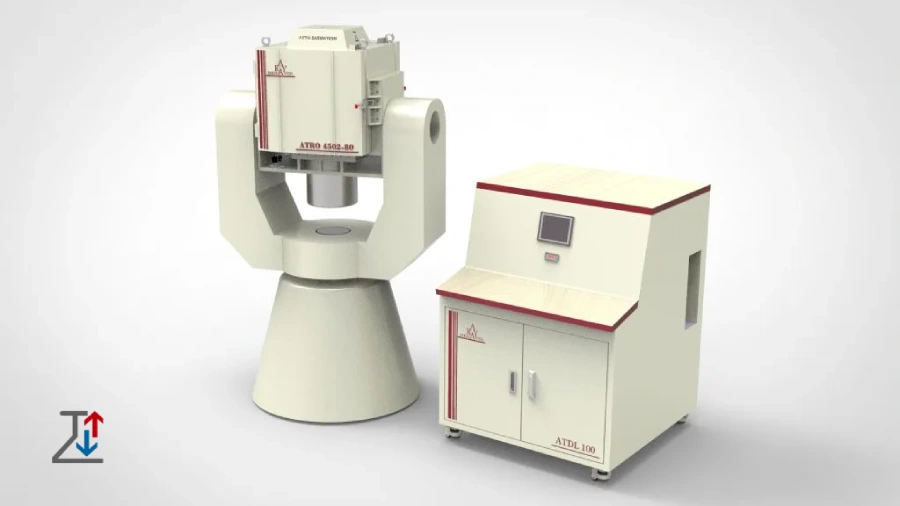
Environmental Simulation Chambers represent an essential progression within the domain of item testing and improvement. These specialized are outlined to reproduce a wide run of environmental conditions with exactness and control, giving producers priceless experiences into how their items will perform in real-world scenarios. From electronics to automotive components, environmental simulation chambers play a crucial role in ensuring product reliability, durability, and compliance with industry standards.
Features of environmental chambers
Aryasarmayesh’s environmental chambers are equipped to simulate a wide array of environmental factors, including temperature (both high and low), humidity, thermal cycling, and UV radiation. This versatility allows manufacturers to test products under a broad spectrum of conditions to ensure their durability and functionality. One of the key features of Environmental Simulation Chambers is their flexibility. These chambers can be customized to imitate particular natural conditions pertinent to a wide run of businesses and applications. Whether testing electronic gadgets for warm administration, car components for solidness beneath changing temperatures, or pharmaceutical products for steadiness in several stickiness levels, Environmental Simulation chambers offer a custom-made arrangement for every testing requirement.
- Precise Control and Accuracy
- Energy Efficiency and Sustainability
- Customizable Solutions
- User-Friendly Interface
- Durability and Reliability
- Compliance with Industry Standards
Process of Utilizing Environmental Simulation Chambers
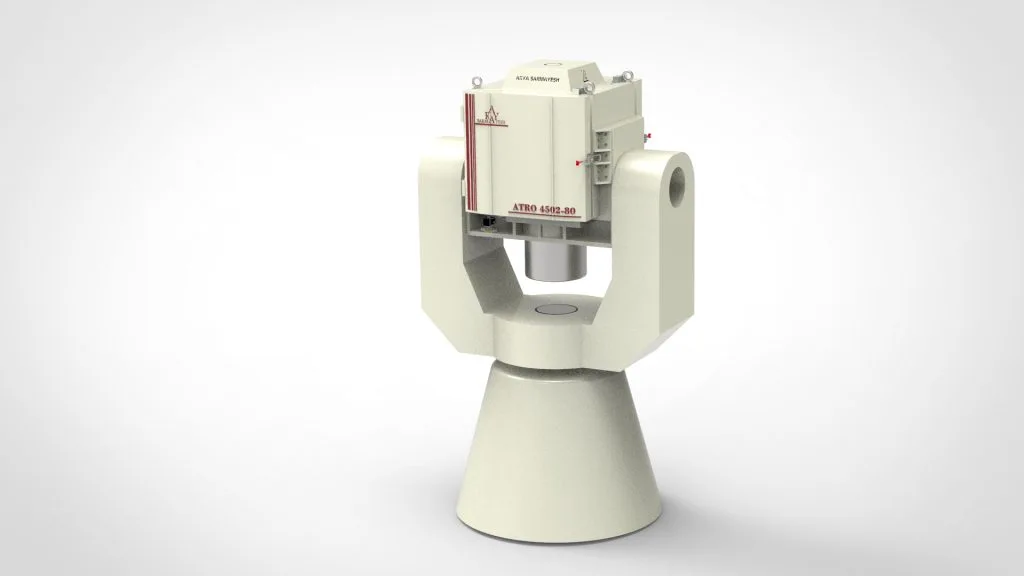
The method of utilizing Environmental Simulation Chambers regularly includes a few stages. To begin with, the testing parameters are characterized based on the product’s determinations and aiming utilization. Following, the item is put interior the chamber, and the natural conditions are accurately controlled and monitored all through the testing period. Information is collected and analyzed to assess the product’s execution and recognize any regions for improvement.
Why Choose Aryasarmayesh?
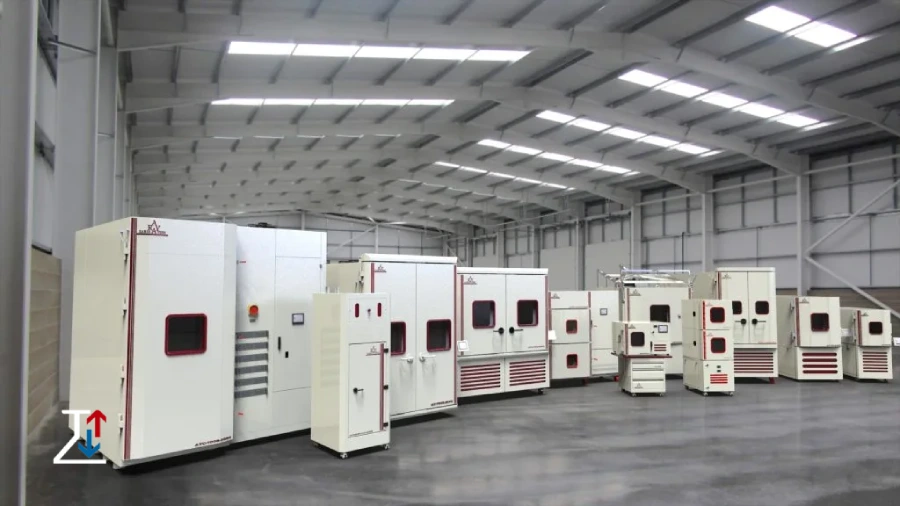
With state-of-the-art technology, energy efficiency, and customization options, Aryasarmayesh is the partner you can rely on for accurate and reliable environmental testing.
- Innovation
- Quality Assurance
- Customer Support
- Global Reach
Invest in Aryasarmayesh today, and future-proof your products for tomorrow’s environmental challenges.
Applications of Environmental Simulation Chamber
Environmental Simulation chambers are versatile tools that play a crucial role in various stages of product development, quality assurance, and research across multiple industries.
Environmental chambers are appropriate for a wide range of applications across various industries:
- Product Testing
- Quality Control
- Research and Development
- Shelf-life Studies
- Climate Simulation
Conclusion
Environmental Simulation Testing is imperative in today’s item advancement and fabricating forms. By subjecting items to thorough testing beneath recreated environmental factors, producers can recognize and address potential shortcomings, eventually improving item versatility and unwavering quality. As innovation proceeds to advance, Natural Reenactment Testing will stay a fundamental device for guaranteeing the quality and execution of items over different businesses.
FAQ
- What is an example of a simulation of environmental factors? An example of a simulation of environmental factors is a climate model used to predict the effects of different greenhouse gas emission scenarios on global temperature, weather patterns, and sea levels.
- What is the environment temperature test? An environmental temperature test refers to an experiment or assessment designed to measure the effect of temperature on an object, system, or material under various environmental conditions. These tests are commonly used in a range of fields, including product development, electronics, automotive testing, and scientific research, to understand how temperature fluctuations or extremes affect performance, durability, and safety.
Related articles in Aryasarmayesh:
The Role of Climatic Test Chambers in Environmental Simulation